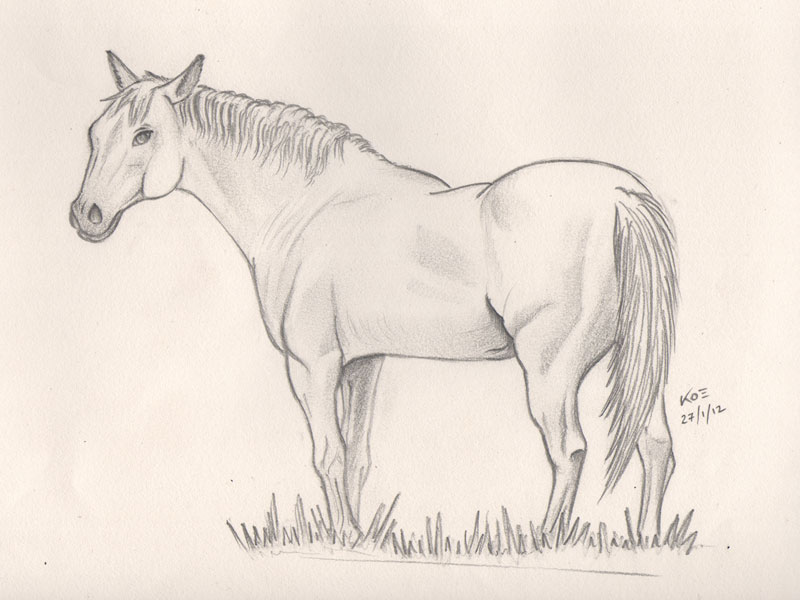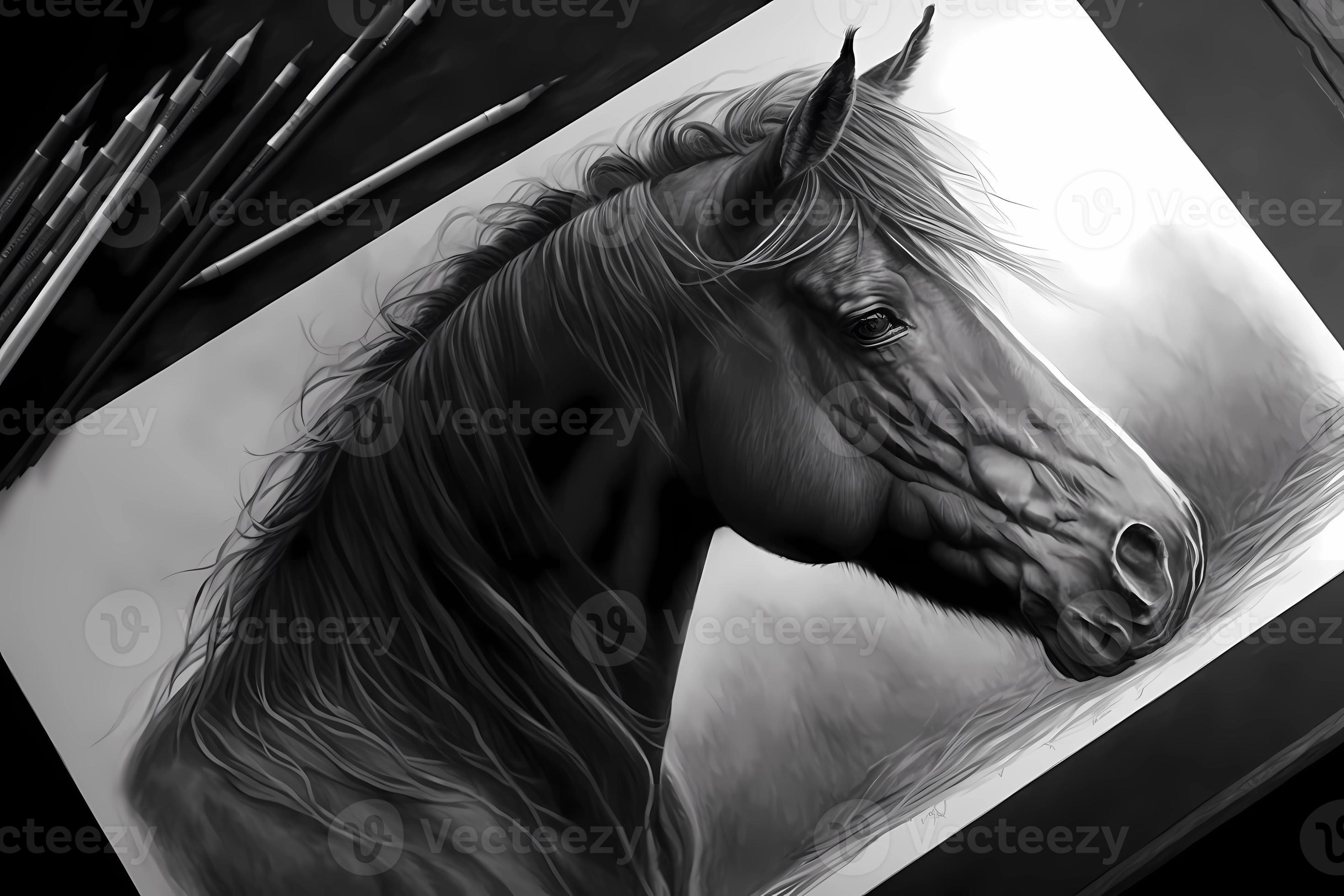

To render the mane, he drew long dark strokes into the lighter underlying area. To produce this striking silhouette the artist drew the outline of this Appaloosa's head first, then filled it in with the black background.

Grace, suppleness, and harnessed power will emerge within a matter of months. A young horse projects the general feeling of an awkward, ungainly creature about to topple. the ribcage and muscle structure are quite evident. This youngster seems all legs as it friskily swings its tail and kicks out with the rear left leg. Note the mount's braided mane and tail which are de rigueur for such a formal and important occasion as a horse show. In this drawing, the rider and horse are equipped with English tack. Jumping is a highly ritualized affair in which the conduct and attire of riders and horses are closely judged. The changes of color in the horse are shown with contrasts of light and dark that have no real sharp edges to separate them. He outlined the animal's spots and placed a dark core inside each one before finishing them.

To accent this gesture, the artist darkened the neck underneath. In this drawing, the most important action is the long sweep of neck as this Appaloosa bends radically forward. The artist darkened the front horse's neck against its much lighter shoulder to make it appear to come forward.

To anchor the animals down, the artist placed lots of darks and some rocks on the ground. The forelock, tail, and the mane at the withers (the ridge between the shoulder bones) are the only areas where the hair is of any length otherwise, the hair is too short to form a noticeable pattern. On the animal's forelock, the hair is shown radiating from a central base.
Small pencil horse sketch Patch#
The white patch and streak were placed on the forehead and nose. The artist used the paper value as the light spot and drew the darker value around it. There are dark spots over the light areas and negative light spots over a dark base such as the hind legs. The two-tone effect of the animal's coat was achieved through contrasts of broken, spotted areas. The artist hadn't yet made any effort to show the hair patterns or markings on the coat.ģ. The roached mane was also indicated with short dark strokes. With long strokes of the pencil, he laid-in the dark hair of the tail. At this stage the artist established the light source and placed the shaded areas lightly on the right side of the head, the underneath part of the neck and body, and in the legs. He marked off the junction of the hairline and hoofs, and he showed the protrusion of the elbow.Ģ. He \ \ ' took care to show the shapes of the tail and the forelock and the placement of the eyes and nostrils. Muscle groupings such as in the /), shoulders and the point of the hip. Then he marked j a few indentations to indicate bone or / To begin, the artist drew in the ( outline of the animal. The Horse artwork samples shown on this page are a small sample of the Kelli Swan creations that are available in the form of prints, notecards, and on gift items such as smartphone and tablet covers, laptop cases, t-shirt, mugs, and more.1. Reproductions of Horse Drawings > Find open edition art prints at Fine Art America/ > Find Mug, t-shirts and more at Zazzle > Black and White Note Cards also at Zazzle


 0 kommentar(er)
0 kommentar(er)
